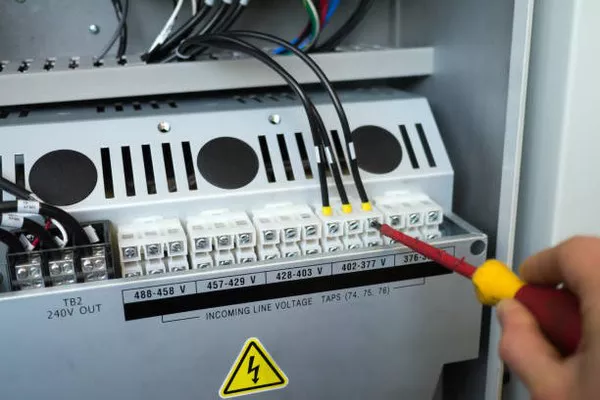Electrical transformers play a pivotal role in power distribution systems, facilitating the efficient transmission of electrical energy. To ensure the reliable and safe operation of transformers, rigorous testing procedures are employed throughout their lifecycle. These tests are designed to verify the transformer’s performance, assess its insulation integrity, and guarantee compliance with industry standards. In this article, we will delve into the various testing methods applied to electrical transformers to ensure their optimal functionality.
Routine Testing:
Routine testing is conducted on every transformer unit during the manufacturing process to identify any potential defects or anomalies. These tests, also known as type tests, are essential to verify the transformer’s compliance with design specifications and industry standards. Some key routine tests include:
Insulation Resistance Test: This test measures the insulation resistance between various winding and core points. It helps identify any insulation breakdown or weaknesses that may compromise the transformer’s reliability.
Winding Resistance Test: Winding resistance tests are performed to measure the resistance of each winding. Deviations from expected values can indicate issues such as poor connections or defects in the winding.
Turns Ratio Test: The turns ratio test assesses the transformation ratio between primary and secondary windings. Any discrepancies can point to manufacturing errors or defects in the transformer’s construction.
Voltage Ratio Test: This test verifies the voltage transformation capability of the transformer. It ensures that the transformer meets the specified voltage ratios under load and no-load conditions.
Polarity Test: Polarity tests confirm that the winding polarities are correctly aligned. Incorrect polarity can lead to improper phase relationships and impact the transformer’s performance.
Type Testing:
Type tests are performed on sample transformers representing a specific design or series to validate their performance under extreme conditions. These tests are essential for ensuring the transformer’s reliability and compliance with international standards. Some crucial type tests include:
Temperature Rise Test: This test assesses the transformer’s ability to dissipate heat under load conditions. It helps determine the maximum allowable temperature rise, ensuring the transformer operates within safe temperature limits.
Short Circuit Withstand Test: Short circuit tests evaluate the transformer’s ability to withstand overcurrent conditions. The transformer is subjected to short circuits to assess its mechanical strength, thermal stability, and overall robustness.
Impulse Voltage Withstand Test: Impulse voltage tests simulate lightning strikes or other high-voltage transients. The transformer must withstand these impulses without insulation failure, ensuring it can operate reliably in areas prone to lightning activity.
Partial Discharge Test: Partial discharge tests detect small electrical discharges within the transformer insulation. Identifying and addressing partial discharges is crucial for preventing insulation breakdown and ensuring long-term reliability.
Routine and type tests collectively contribute to the comprehensive evaluation of transformer units, ensuring they meet the stringent requirements of the power industry.
Special Tests:
In addition to routine and type tests, special tests may be conducted based on specific project requirements or customer preferences. These tests are tailored to address unique aspects of transformer design or intended operating conditions. Some notable special tests include:
Sound Level Measurement: Transformers generate audible noise during operation. Sound level tests assess and ensure that the transformer’s noise emissions comply with specified limits, particularly important in residential or noise-sensitive areas.
Dielectric Type Tests: Dielectric tests evaluate the insulation properties of the transformer. These tests include power frequency voltage tests, lightning impulse tests, and switching impulse tests, all designed to assess the dielectric strength and insulation integrity.
Measurement of Harmonics: Harmonic content in the output voltage can affect the performance of connected equipment. Harmonic measurement tests help evaluate the transformer’s susceptibility to harmonic distortion and its ability to mitigate harmonics.
See Also: What Is Power Transformer In Substation?
Conclusion:
The testing of electrical transformers is a multifaceted process that encompasses routine, type, and special tests. These tests collectively ensure that transformers meet design specifications, comply with industry standards, and operate reliably under various conditions. The meticulous examination of insulation integrity, winding resistance, voltage ratios, and other critical parameters guarantees the transformers’ longevity and performance in power distribution networks.
As technology advances, testing methods continue to evolve, incorporating innovations to address emerging challenges and ensure the reliability of transformers in the dynamic landscape of the power industry. Ultimately, the commitment to stringent testing practices is integral to the production of transformers that form the backbone of modern electrical systems, providing efficient and stable power distribution across the globe.


